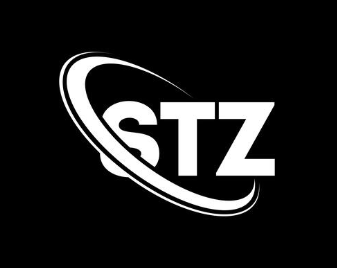In 2025, the ability to effectively communicate with AI has become more important than ever. With advanced language models like ChatGPT, using structured prompt frameworks ensures that AI delivers responses that are accurate, relevant, and tailored to your needs. Whether you’re a developer, marketer, or content creator, mastering these frameworks can significantly enhance the way you interact with AI, making your tasks more efficient and your results more precise. In this guide, we’ll dive into the essential prompt frameworks of 2025 and show you how to make the most of AI’s full potential.
What Are AI Prompts and Prompt Frameworks?
AI prompts are specific instructions that we give to artificial intelligence models, guiding them on responding to our requests. Think of it as providing clear directions to someone to complete a task. For instance, if you ask an AI to “generate an article on artificial intelligence,” that’s your prompt.
A prompt framework, however, is a structured guide to create these prompts. It helps break down the task into clear, manageable parts, ensuring that the AI understands exactly what you need. Frameworks are like templates that help direct AI toward a specific output by providing context, role, and structure.
Why AI Prompt Frameworks Matter for Business and Creativity
For businesses, AI is a powerful tool to enhance productivity, create content, and solve complex problems. However, without a clear framework, AI might not provide useful or relevant responses. Frameworks help structure the way we communicate with AI, ensuring more accurate and contextually appropriate results.
In the world of creativity, frameworks guide the AI to produce content that meets specific goals, whether it’s generating compelling marketing copy, writing stories, or coming up with creative ideas. Clear frameworks make it easier to get quality content in less time, which is crucial for both business and creative tasks.
Exploring Basic Prompt Frameworks
If you’re new to AI, starting with simple prompt frameworks like RTF (Role-Task-Format) or APE (Action-Purpose-Expect) is a great way to get familiar with the process. These frameworks offer an easy-to-understand structure that simplifies prompt creation for beginners.
- RTF Framework: This framework helps define the role of the AI (what role should it take?), the task (what do you want AI to do?), and the format (how do you want the output to appear?). For example:
- Role: “You are a business strategist.”
- Task: “Help me create a 3-month marketing plan.”
- Format: “Provide a weekly table with key marketing activities.”
- Role: “You are a business strategist.”
- APE Framework: This framework focuses on the Action (what needs to be done), the Purpose (why it’s being done), and the Expectation (what the outcome should be). For example:
- Action: “Write a product description.”
- Purpose: “To attract potential customers to buy the product.”
- Expectation: “The description should highlight key features and benefits, be 150 words, and be easy to understand.”
- Action: “Write a product description.”
These basic frameworks help structure your prompt in a way that guides the AI toward generating precise responses.
Common Mistakes to Avoid When Crafting Your First Prompts
When starting, it’s easy to make mistakes like being overly vague or not providing enough context. For example, instead of saying “write a story,” you should specify the genre, tone, and any important plot elements to guide the AI. Also, beginners often overlook the format in which they want the output, leading to disorganized or incomplete results.
It’s important to refine your prompts through trial and error. Begin with a simple framework, see how the AI responds, and tweak the prompt based on the feedback. By doing so, you can gradually improve the quality of your AI responses.
Advanced Prompt Frameworks for Expert Users
As you become more experienced with AI, you’ll need more sophisticated frameworks to handle complex tasks. Frameworks like CHAT (Character-History-Ambition-Task) and ROSES (Role-Objective-Scenario-Expected-Solution-Steps) offer greater depth, enabling you to direct AI in more specific ways.
- CHAT helps define the Character (who the AI should be), the History (what background information is needed), the Ambition (what the end goal is), and the Task (what the AI should do).
- Example: “You are a marketing expert. Our company just launched a new service, but engagement has been low. Our goal is to increase customer interaction by 25%. Help us develop a social media strategy.”
- Example: “You are a marketing expert. Our company just launched a new service, but engagement has been low. Our goal is to increase customer interaction by 25%. Help us develop a social media strategy.”
- ROSES breaks down tasks by defining the Role (who the AI is), the Objective (what the goals are), the Scenario (the situation), the Expected Solution (what outcome is expected), and the Steps (how to achieve the solution).
- Example: “You are a financial analyst. We need to create a risk analysis report for an investment project in the tech industry. The expected solution is a detailed report with data-backed insights. Break it down into the key steps.”
- Example: “You are a financial analyst. We need to create a risk analysis report for an investment project in the tech industry. The expected solution is a detailed report with data-backed insights. Break it down into the key steps.”
These advanced frameworks enable you to give AI clear, well-defined instructions, ensuring it produces high-level, relevant outputs.
The Most Powerful Frameworks for High-Level AI Tasks
When dealing with tasks that require specialized knowledge, advanced frameworks are crucial. For example, COAST (Context-Objectives-Action-Support-Technology) helps guide AI in developing detailed project plans, while frameworks like RACE (Role-Action-Context-Expectation) help ensure AI produces professional and accurate business outputs.
- COAST helps define the Context (what background information is necessary), the Objectives (what the goals are), the Action (what needs to be done), the Support (resources available), and the Technology (tools and systems required).
- Example: “We are launching a new website for an e-commerce store. The objective is to increase conversion rates by 30%. The action includes creating a UX design plan, using data analytics for optimization, and leveraging A/B testing tools.”
- Example: “We are launching a new website for an e-commerce store. The objective is to increase conversion rates by 30%. The action includes creating a UX design plan, using data analytics for optimization, and leveraging A/B testing tools.”
These frameworks are vital for users who need AI to handle more complex, business-critical tasks.
Creative & Content Generation Frameworks
AI can help generate creative content, but you need to guide it with clear frameworks like AIDA (Attention-Interest-Desire-Action). This framework is widely used in marketing and copywriting to capture the reader’s attention, build interest, create desire, and prompt action.
For instance, if you need a marketing email, you can use AIDA to guide the AI to:
- Attention: “Did you know that 70% of businesses struggle with online customer engagement?”
- Interest: “Our new software solution has helped companies boost engagement by 40%.”
- Desire: “Imagine seeing better interaction rates and growing your customer base with minimal effort.”
- Action: “Sign up for a free demo today and see how it works.”
How to Design Content-Generation Frameworks for Maximum Output
When AI is needed to create content for different platforms, using frameworks like COSTAR (Context-Objective-Style-Tone-Audience-Response) ensures that the content perfectly fits the target audience and purpose.
For example, when writing a blog post for a tech-savvy audience:
- Context: “We’re launching a new AI-powered app.”
- Objective: “Explain how the app works and highlight its benefits.”
- Style: “Professional, technical, yet accessible.”
- Tone: “Innovative and forward-thinking.”
- Audience: “Tech enthusiasts and early adopters.”
- Response: “Write a 600-word blog post with a technical introduction, detailed features section, and a clear call to action.”
This structure ensures the content aligns with the brand’s goals while meeting audience expectations.
Problem-Solving & Reasoning Frameworks
For tasks requiring structured problem-solving, frameworks like SPAR (Scenario-Problem-Action-Result) can help break down the issue into smaller, actionable steps.
For instance, if you’re facing a customer service problem:
- Scenario: “Customer complaints about slow response times have risen by 30%.”
- Problem: “The support team is understaffed, causing delays in responses.”
- Action: “Increase staffing levels and implement automated systems to handle common queries.”
- Result: “Response time is reduced by 50%, improving customer satisfaction.”
These frameworks help ensure that AI tackles the problem methodically, ensuring all angles are covered.
Chain-of-Thought & Few-Shot Prompts: Your Secret Weapon for AI Success
Advanced reasoning frameworks like Chain-of-Thought and Few-Shot prompting help AI think through tasks step-by-step, ensuring it delivers accurate and well-structured results. By guiding AI through a logical reasoning process, these frameworks help reduce errors and improve the overall quality of the output.
Frameworks for Business Tasks
Using frameworks like RACE (Role-Action-Context-Expectation) ensures AI generates clear, actionable responses when working on business tasks. For example:
- Role: “You are a financial analyst.”
- Action: “Create a quarterly sales report.”
- Context: “The company had a revenue increase of 10%, but expenses were also higher.”
- Expectation: “Present the report in bullet points with a summary of key trends.”
This structure helps generate professional reports quickly and efficiently.
Business-Specific Frameworks You Should Know
For business-related tasks, frameworks like SMART (Specific-Measurable-Achievable-Relevant-Time-bound) help set clear goals and ensure tasks are completed within the defined timeframe and scope.
Specialized Prompt Frameworks
When working in specialized industries, frameworks like SERP (Search Engine Response Prompting) help AI generate results that are optimized for search engines, ensuring that the content is both relevant and easy to digest.
Future Trends in Specialized AI Frameworks
As AI evolves, new frameworks will emerge that are more tailored to specific industries, ensuring businesses can leverage AI in even more targeted ways.
Metrics & Evaluation: Perfecting Your Prompts
Regularly evaluating AI responses is key to improving your prompts. Metrics such as relevance, clarity, and completeness help you assess how well AI meets your expectations.
Choosing the Right Framework for Your Task
The framework you choose depends on the complexity of the task. For simple tasks, basic frameworks like RTF work well, while complex tasks may require advanced frameworks like CHAT or ROSES.
Emerging AI Frameworks to Watch in 2025
Innovative frameworks like NeuroPrompt and EvoPrompt are pushing the boundaries of AI prompting. These new approaches promise more dynamic, adaptive AI interactions, offering even greater control and precision.
How Emerging Trends Are Shaping the Future of Prompt Engineering
As AI continues to develop, prompt engineering will evolve with it. Staying up to date with the latest trends will help businesses make the most of these advancements.
Conclusion
Mastering AI prompt frameworks is essential for getting the best results from AI. By using the right frameworks, you can improve efficiency, boost productivity, and ensure that your AI interactions are always successful.
As AI continues to evolve, so too will prompt engineering. The future holds exciting possibilities, with more advanced frameworks providing even more power and precision to AI systems.








